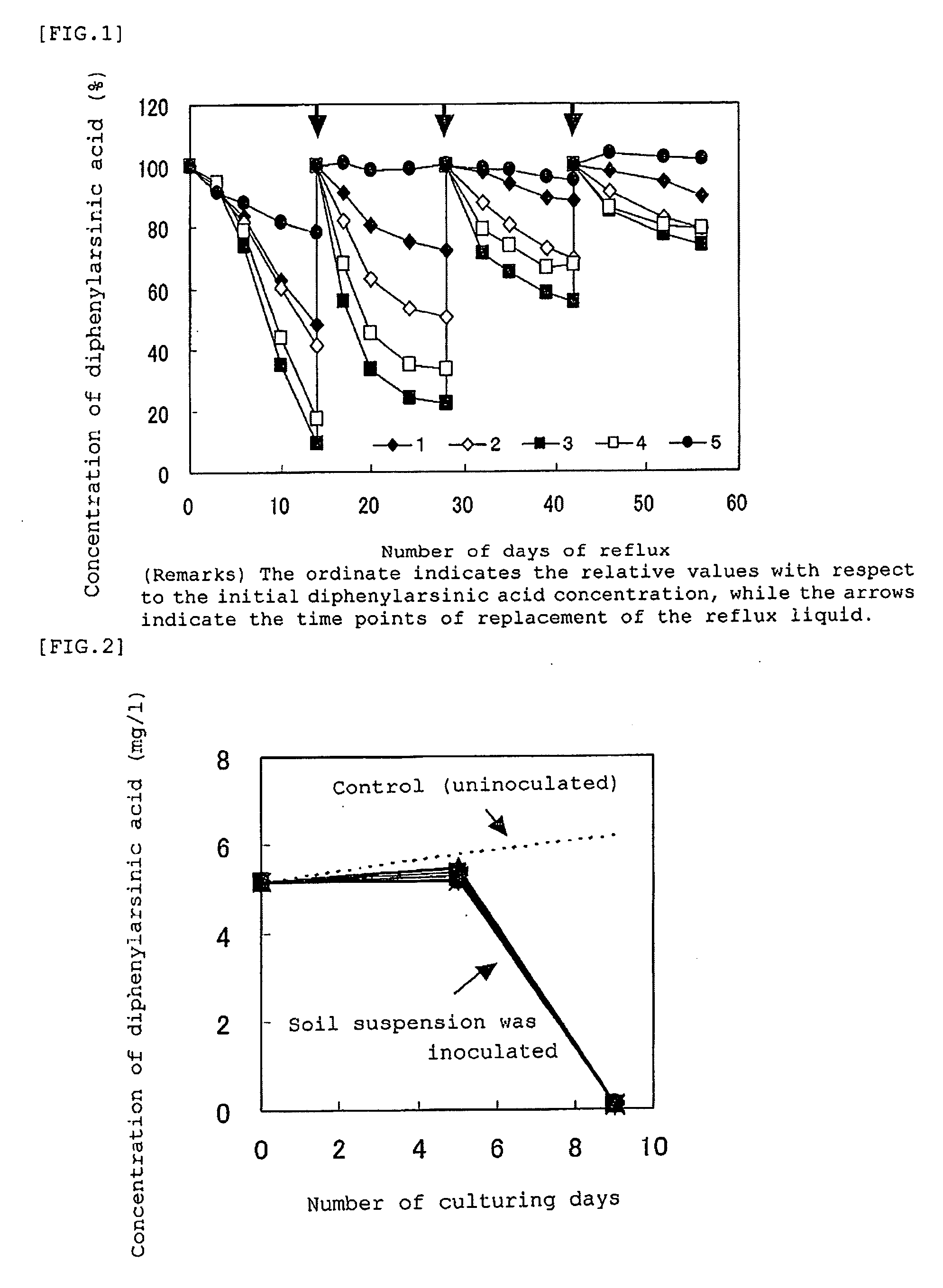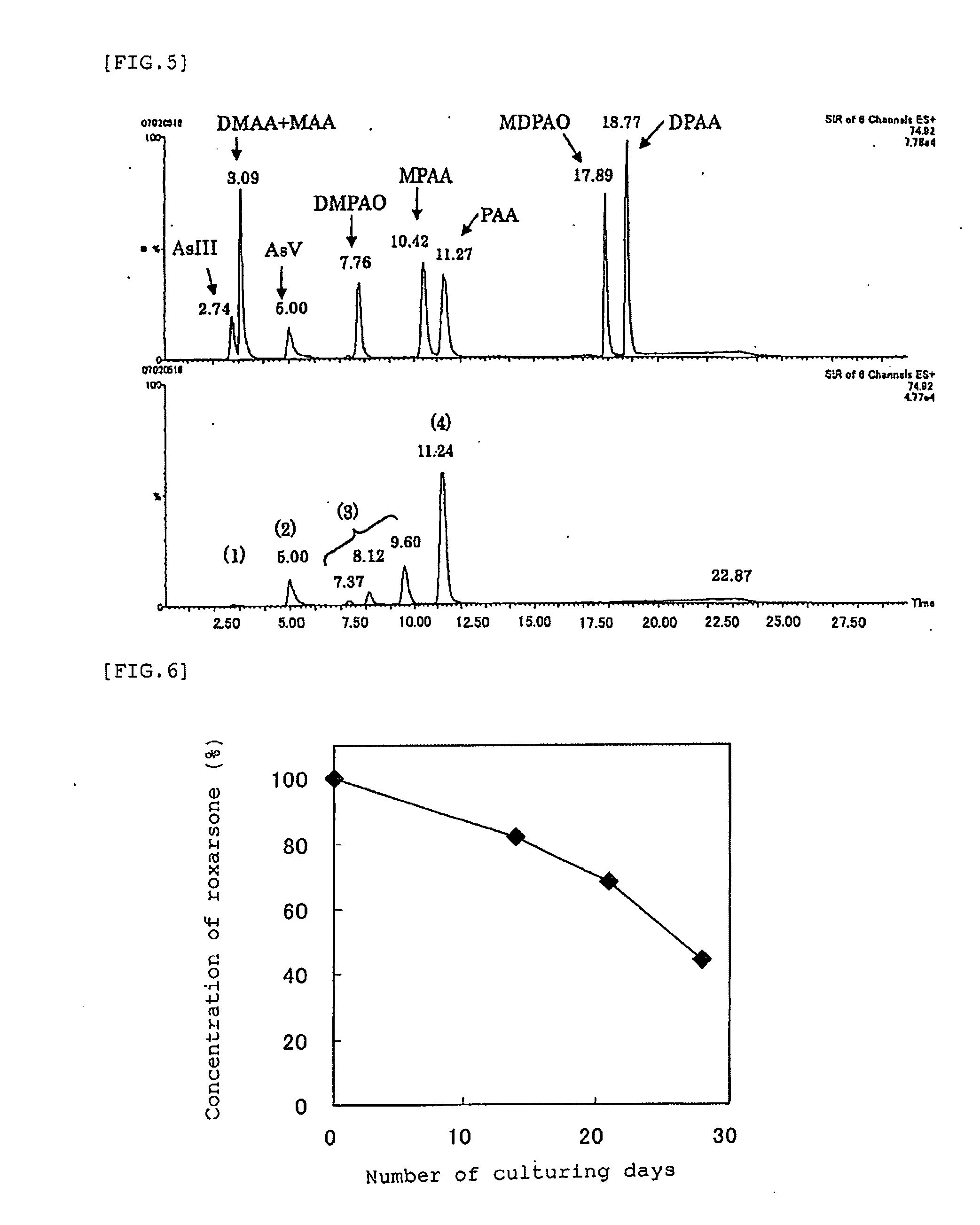Novel microorganism capable of degrading diphenylarsinic acid
a diphenylarsenic acid and microorganism technology, applied in the field of microorganisms, can solve the problems of affecting the health of neighboring residents, requiring enormous efforts and costs, and unable to establish the technology for restoring such organoarsenic-contaminated soil, etc., and achieve the effect of convenient purification
- Summary
- Abstract
- Description
- Claims
- Application Information
AI Technical Summary
Benefits of technology
Problems solved by technology
Method used
Image
Examples
examples
[0128]The following examples are illustrative of the present invention and should not be construed as limiting the scope of the invention in any manner.
[Enrichment Culture of Diphenylarsinic Acid Degrading Bacteria]
[0129]The enrichment culture of diphenylarsinic acid degrading bacteria was carried out by a soil / charcoal reflux method. First, an autoclave-sterilized (120° C., 20 minutes) reflux liquid having the composition indicated in Table 1 was prepared. However, magnesium sulfate heptahydrate was separately prepared into a solution by itself at an appropriate concentration, and the solution was added to the reflux liquid after being separately sterilized in an autoclave.
[0130]As the source of microorganism, arsenic-contaminated paddy field soils I and II, which were collected from Kamisu city, Ibaraki Prefecture, were tested. These soils were respectively weighed while still wet, to an amount equivalent to 30 g of dry soil, and mixed with a small amount of charcoal (Charcoal A, ...
PUM
| Property | Measurement | Unit |
|---|---|---|
| temperature | aaaaa | aaaaa |
| concentration | aaaaa | aaaaa |
| concentration | aaaaa | aaaaa |
Abstract
Description
Claims
Application Information
 Login to View More
Login to View More - R&D
- Intellectual Property
- Life Sciences
- Materials
- Tech Scout
- Unparalleled Data Quality
- Higher Quality Content
- 60% Fewer Hallucinations
Browse by: Latest US Patents, China's latest patents, Technical Efficacy Thesaurus, Application Domain, Technology Topic, Popular Technical Reports.
© 2025 PatSnap. All rights reserved.Legal|Privacy policy|Modern Slavery Act Transparency Statement|Sitemap|About US| Contact US: help@patsnap.com



